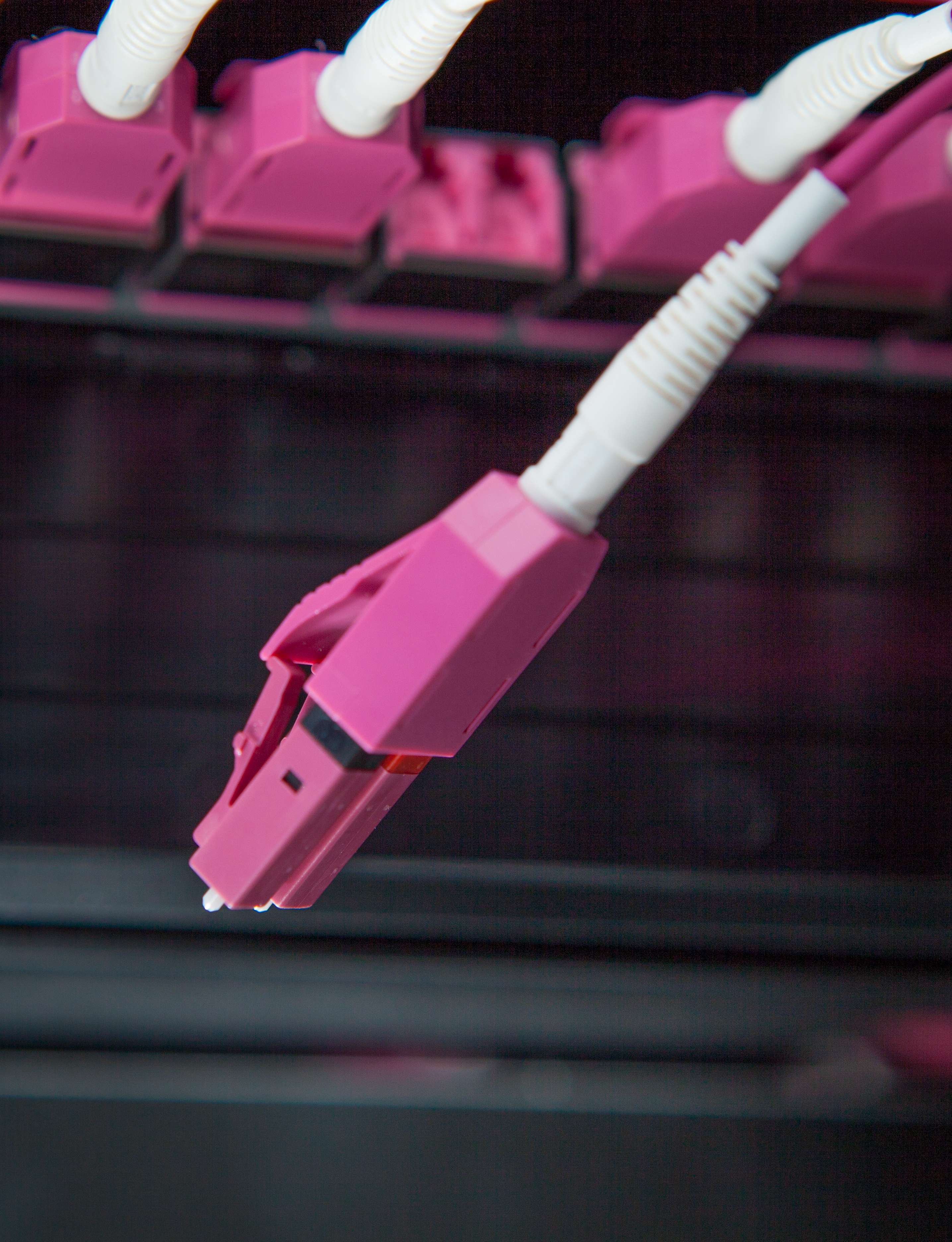Brand-Rex is set to launch a new 100/128 Gigabit/s Wideband Multi-Mode Fibre Solution for data centres, requiring only two fibres per link compared to current 20-fibre and 8-fibre solutions.
The new product-set includes fibre cable and patch cords and is fully integrated into the Brand-Rex HI-DEX data centre connectivity system.
Announcing the new Wideband Multi-Mode Fibre Solution at Data Centre World in London, Brand-Rex product manager Richard Budd said, “Wideband Multi-Mode Fibre is a complete game-changer for fibre networking in the data centre. For the first time it will be possible to carry four separate data channels along each fibre.
“By using Shortwave Wavelength Division Multiplexing (SWDM), four separate signals can be aggregated (multiplexed) and transmitted concurrently over an 850nm to 950nm window. This is made possible due to the maintained OM4 bandwidth performance of our new Wideband Multi-Mode Fibre solution over this wavelength range.
“This makes the Brand-Rex Wideband Multi-Mode Fibre solution ideal for future 100Gb/s Ethernet and 128Gb/s Fibre Channel applications, maintaining industry preferred LC duplex connectivity. Furthermore, this technology establishes a sensible building block from which 400Gb/s speeds can be achieved using our market leading MTP connectivity set.”
Designed to be fully integrated with the revised HI-DEX data centre solution set (also being unveiled at Data Centre World), Wideband Multi-Mode Fibre will be a standard fibre option for Brand-Rex Tight Buffered Premises Distribution and Central Loose Tube (Unitube) cable types.
Pre-terminated backbone cables with high performance MTP connectors are available to connect Wideband Multi-Mode Fibre backbone cables into HI-DEX connectivity cassettes. Duplex LC adaptors (including industry leading integrated adaptor protection shutters) are presented to the front of the HI-DEX cassettes for patching. A full range of Brand-Rex Wideband Multi-Mode Fibre patch-cords and pigtails will be available to complete the solution.
Explaining how the new technology will make a massive change to super high speed connectivity, Budd said, “the first implementation of 100Gb/s Ethernet required 20 fibres for every link. Links with eight fibres (transmitting 25Gb/s channels per fibre pair) are the current market solution but with the new Wideband Multi-Mode Fibre we are able to reduce that to just two fibres per link (one for transmit and one for receive) in line with legacy fibre speeds of 10Gb/s and below.”
Budd explained that because Brand-Rex Wideband Multi-Mode Fibre is laser optimised from 850nm to 950nm, it will have the same performance as OM4 cable at the 850nm wavelength and so it will be fully backwards compatible for speeds down to 10Gb/s and 1GB/s. This will enable data centre operators to deploy Wideband Multi-Mode Fibre immediately on new and expansion projects – giving themselves total flexibility to upgrade to 40Gb/s, 50Gb/s, 100Gb/s or 200Gb/s over LC Duplex or 400Gb/s with MTP connectivity at any time in the future without having to replace fibre cabling or connectivity.
Standardisation of Wideband Multi-Mode Fibre is well advanced in the American committees under the designation TIA/EIA 492AAAE with publication planned during 2016. The push to standardise Wideband Multi-Mode Fibre has been led by industry giants such as IBM and the main optical transceiver manufacturers including Avago, Finsar and Foxcon.
ISO/IEC, the international standards organisation, is anticipated to commence work on the international standard very soon. Exactly what “OM” nomenclature this new fibre will adopt is still up for debate.
The Brand-Rex Wideband Multi-Mode Fibre solution can be viewed at stand H75 Data Centre World, London ExCel exhibition centre 12-13 April. See also www.brand-rex.com/HI-DEX.


